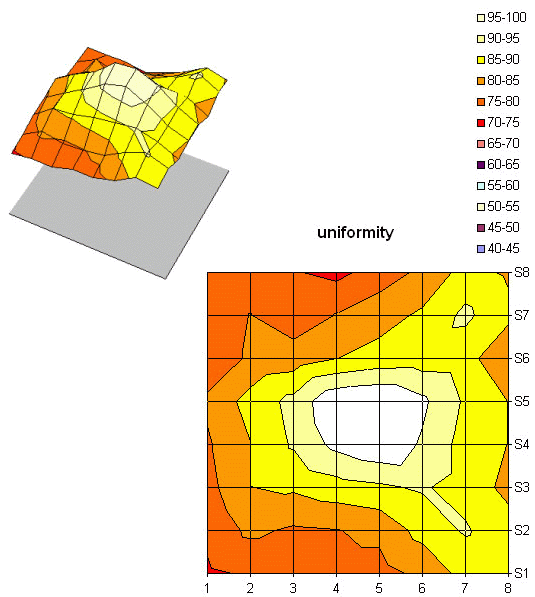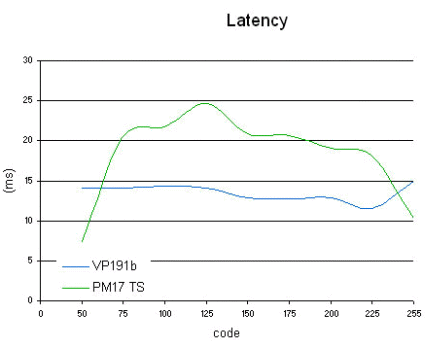Are 17" LCDs Dead?
Spatial Uniformity
We measured the uniformity of the display across the panel.
For those who aren't familiar with THG's tests, here's a little reminder about our methodology:
We set the panel at 50% brightness and 50% contrast, and we then measure the consistency of light level over a square white image divided into 64 zones of equal size. The brightest point is assigned the value of 100%, the level of black (measured previously) is set at 0%, and other values measured are shown below.

The uniformity of the device isn't excellent. Its performance was decidedly average. Fortunately, the top of the panel is generally as bright as the bottom. As a result, you won't see too many "flares" in your movies: that's something.
An 8 Ms Classic
We measured the true latency of the PM17T-S:

Recall, our test method once again:
Stay on the Cutting Edge
Join the experts who read Tom's Hardware for the inside track on enthusiast PC tech news — and have for over 25 years. We'll send breaking news and in-depth reviews of CPUs, GPUs, AI, maker hardware and more straight to your inbox.
This curve shows the different latency values as a function of the gray-scale level. Alternating from black to white is represented on the curve by a point with an x-coordinate of 255; black-to-grey has a value on the x-axis of 125 whereas black-to-dark grey displays 50, etc. The official ISO latency specified by the manufacturer only covers black/white transitions (0/255). Although the value we measured tallies with the manufacturer on this point, that's not of much use in judging the actual responsiveness of the panel in practice.
Here, we are well short of overdrive performance. Most manufacturers of 17" LCD monitors are content with TN+ film or classic IPS. So, of course, the results are in keeping with that choice of technology with a quoted latency of 8 ms but which in reality nudges 24.5 ms.
Most Popular

